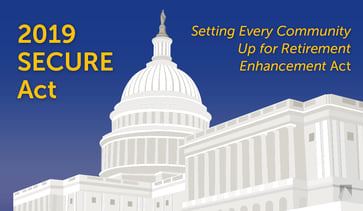4 min read
Changing Gears from Saving to Spending in Retirement: What You Need to Know
Adam Robert : February 13, 2020

Changing gears from earning and saving your money to spending your savings is a major challenge for most of us. It’s not that sudden massive shopping sprees or a lavish lifestyle are planned by most retirees — the spending usually involves buying routine things. The challenge is in adjusting to where the money comes from during your retirement.
A 30-year trend
It used to be that pension plans were the norm. These Defined Benefit plans (Pension plans) provide a level income guaranteed during an employee’s lifetime in retirement (and possibly for your spouse’s life). Pension plans provide guaranteed income in retirement – the retiree does not see a substantial difference in funding living expenses during retirement from funding expenses during working years.
In the modern era, most employers sponsor retirement plans with employer and employee contributions designed to grow in a retirement savings account over time. These plans, most commonly referred to as Defined Contribution plans, for example, 401(k) plans or 403(b) plans, do not provide guaranteed income in retirement – instead they accumulate assets in a tax-deferred investment-type account during your working years that you can spend-down at your own discretion. Tax-deferred contributions can be made by the employee and matched by the employer (depending on how the plan was established) but federal regulations require employers to report regularly to employees on the status of your 401(k) account.
From paychecks to draw downs
You and I are creatures of habit. So, it is not surprising that after decades of living within your means, saving consistently, and watching your retirement account balance grow, the idea of reducing your account balance is disconcerting (to put it mildly!). And the combination of the multiple decisions to be made, plus the fear of outliving your savings, can be paralyzing.
Examples of decisions to be made about your goals and retirement lifestyle
- How well do you want to live? Will you be living more or less extravagantly than before retirement?
- Does living well include exotic once-in-a-lifetime travel destinations?
- Where do you want to live? Would you move closer to grandchildren or warmer weather? Downsize?
- Do you want to leave anything to your heirs?
- Do you want to help others through charity?
Examples of decisions to be made about your retirement account options
- Do you want to keep your account where it is?
- Would you prefer to rollover the account to an IRA?
- Would you rather take a total or partial distribution — that is fully taxable to you in the tax year taken?
- Or if your plan allows, would you worry less about outliving your savings if you convert the account into an income stream through an annuity?
- Have you planned for the timing of Required Minimum Distributions (RMDs)? These distributions are mandated by the IRS once the account holder has reached a certain age. Failure to take the RMD can result in a 50% penalty from the IRS.
The SECURE Act of 2019
The new Setting Every Community Up for Retirement Enhancement Act of 2019 (SECURE Act), which became effective January 1, 2020, brought significant changes to retirement and investing rules that have only added to the confusion.

- RMD distributions are not required to begin until age 72 now. Instead of having to take annual RMDs from your 401(k) and IRA when you turn 70 ½, the minimum age would be 72. This can be a tax advantage to those who continue to work or can afford to delay taking money out.
- The age limitation is removed on contributing to an IRA (previously age 70 ½). This means older workers will be able to save on a pretax basis and boost their retirement pots. Given that folks are working longer and expect increasing longevity, this is significant.
- Childbirth and adoption are now qualifying events for penalty-free early withdrawals from a 401(k) (normally a 10% penalty applies to early withdrawals before plan retirement age).
- What was known as the stretch provision in Beneficiary IRAs (IRAs that pass to your heirs) was eliminated. The stretch provision allowed the beneficiary to take distributions over their lifetime. Now except for spouses, these distributions must be taken over a 10-year maximum period. (Note that this change significantly compresses the time for distributions, which increases the taxes on your beneficiaries by increasing their annual RMD amount. Withdrawals from an inherited Roth IRA are still tax free.)
- Small employers will have access to lower-cost 401(k) plans through pooled, multiple-employer plans and tax credits. The benefit is that many small businesses that could not afford retirement plans for their employees before, will be able to now.
- A fiduciary safe harbor provision makes it easier for employers to offer retirement plans with lifetime income options through annuities. Annuity options inside 401(k) plans will depend on the plan provider and the employer.
- The SECURE Act also expands the definition of qualified higher education expenses to include student loan payments and costs of apprenticeship programs up to $10,000 from 529 College Savings Plans, creating more options for families.
The elimination of stretch IRAs alone is expected to increase federal income taxes paid to Treasury by $15.7 billion over the next 10 years.
What to do?
For many of us, this is too much to think about. We become exhausted by decision fatigue or frozen by the fear of making a BIG mistake. The answer is to begin taking small planning steps now to change gears. No matter what retirement looks like to you, you will need to change gears from saving to spending to make it happen. Don’t strip your gears – start planning the shift now. Our retirement toolkit can help you get started.
Resources
Do You Suffer from Decision Fatigue? New York Times
Are You Making Financial Decisions by Default, Clute Wealth Management
What is the Secure Act and How Could it Affect Your Retirement?
Retirement Toolkit, Clute Wealth Management
Adam W. Robert, CFP® of Clute Wealth Management in South Burlington, VT and Plattsburgh, NY, an independent firm that provides strategic financial and investment planning for individuals and small businesses in the Champlain Valley region of New York and Vermont. This information is not intended to be a substitute for specific individualized tax or legal advice. We suggest that you discuss your specific situation with a qualified tax or legal advisor.


